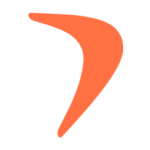Employee Monitoring Software: A Tool to Overcome Digital Addictions
In today’s hyper-connected world, digital addiction is becoming a growing challenge for employees and businesses alike. Whether it’s excessive social media use, online gaming, or other distractions, digital addiction significantly impacts workplace productivity and focus.
Fortunately, modern solutions like employee monitoring software can play a crucial role in managing and overcoming these challenges. By promoting accountability and helping employees develop healthier digital habits, businesses can foster a more balanced and productive workplace.
What Is Digital Addiction, and Why Does It Matter?
Digital addiction refers to compulsive and excessive use of technology, such as smartphones, social media platforms, or gaming apps. While digital tools are vital for work, overuse or misuse can:
Decrease focus and productivity.
Lead to missed deadlines.
Cause stress and burnout.
Disrupt team collaboration.
As employees struggle with these distractions, businesses face lower efficiency and engagement levels. This is where employee monitoring software comes in.
How Employee Monitoring Software Helps Manage Digital Addictions
Employee monitoring software offers businesses a way to track workplace activity and support employees in maintaining focus. Here’s how it can help deal with digital addictions:
1. Identifying Distraction Patterns
The software provides real-time data on how employees spend their work hours. Managers can identify patterns of excessive use of non-work-related apps or websites, allowing for early intervention.
2. Encouraging Accountability
When employees are aware of monitored activity, they are more likely to stay focused on tasks, gradually reducing reliance on distracting platforms.
3. Time Management Insights
By offering insights into time spent on productive versus non-productive activities, employee monitoring tools encourage better time management.
4. Providing Break-Time Recommendations
Monitoring software can track usage patterns and recommend appropriate break times, helping employees maintain a healthy balance between work and rest.
5. Supporting Behavioral Change
Over time, the awareness and insights provided by monitoring tools can help employees develop healthier digital habits, benefiting their overall well-being.
Implementing Employee Monitoring Software Effectively
To ensure the successful adoption of employee monitoring software, businesses need to strike a balance between productivity enhancement and employee privacy. Here are some best practices:
1. Communicate Clearly
Inform employees about why monitoring software is being implemented. Focus on its role in enhancing productivity and supporting well-being rather than as a surveillance tool.
2. Set Transparent Policies
Define what activities are being monitored, how data will be used, and the boundaries of privacy.
3. Provide Regular Feedback
Use the data to have constructive conversations with employees, offering guidance to improve focus and productivity.
4. Combine with Wellness Programs
Pair monitoring tools with wellness initiatives that address the root causes of digital addiction, such as stress or boredom.
Beyond Monitoring: Building a Healthy Digital Culture
Employee monitoring software is a powerful tool, but it should be part of a broader strategy to combat digital addiction. Companies can:
Encourage Digital Detox: Introduce no-tech zones or times during the day to limit excessive screen time.
Promote Offline Activities: Organize team-building events or wellness workshops that don’t involve digital devices.
Educate Employees: Provide training on healthy technology use and the impact of digital addiction on productivity.
Final Thoughts
Digital addiction is a pressing issue that impacts both employees and organizations. By implementing employee monitoring software, businesses can take a proactive step toward managing distractions, fostering focus, and creating a healthier digital workplace.
When used transparently and ethically, these tools not only boost productivity but also empower employees to build better habits, leading to a happier, more balanced workforce.
Let your workplace lead the way in transforming digital challenges into opportunities for growth.
Say goodbye to digital distractions and hello to peak productivity with the right tools and strategies.
- Abuse & The Abuser
- Achievement
- Activity, Fitness & Sport
- Aging & Maturity
- Altruism & Kindness
- Atrocities, Racism & Inequality
- Challenges & Pitfalls
- Choices & Decisions
- Communication Skills
- Crime & Punishment
- Dangerous Situations
- Dealing with Addictions
- Debatable Issues & Moral Questions
- Determination & Achievement
- Diet & Nutrition
- Employment & Career
- Ethical dilemmas
- Experience & Adventure
- Faith, Something to Believe in
- Fears & Phobias
- Friends & Acquaintances
- Habits. Good & Bad
- Honour & Respect
- Human Nature
- Image & Uniqueness
- Immediate Family Relations
- Influence & Negotiation
- Interdependence & Independence
- Life's Big Questions
- Love, Dating & Marriage
- Manners & Etiquette
- Money & Finances
- Moods & Emotions
- Other Beneficial Approaches
- Other Relationships
- Overall health
- Passions & Strengths
- Peace & Forgiveness
- Personal Change
- Personal Development
- Politics & Governance
- Positive & Negative Attitudes
- Rights & Freedom
- Self Harm & Self Sabotage
- Sexual Preferences
- Sexual Relations
- Sins
- Thanks & Gratitude
- The Legacy We Leave
- The Search for Happiness
- Time. Past, present & Future
- Today's World, Projecting Tomorrow
- Truth & Character
- Unattractive Qualities
- Wisdom & Knowledge





Comments